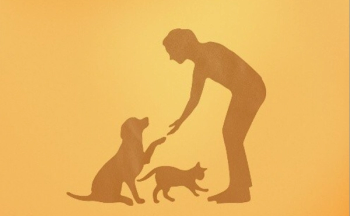
Preventing Feline Tick Paralysis in Eastern Australia
Is topical fluralaner effective in controlling Ixodes holocyclus infestations in cats?
Tick paralysis is believed to be caused by neurotoxins called holocyclotoxins that are released during feeding of Ixodes holocyclus and disrupt presynaptic release of acetylcholine. I holocyclus is one of the most virulent tick species causing systemic paralysis with respiratory and cardiac depression often leading to death if not treated. This form of paralysis continues to be a major concern and cause of death in domestic pets along the coast of Eastern Australia. Natural hosts, such as bandicoots and kangaroos, coupled with optimal landscape and weather conditions, add to the complexity of controlling tick populations in this area.
An effective, convenient preventive is available for dogs in the region; however, owners of domestic cats have struggled to apply a preventive spray to their pets every 3 weeks that must cover the entire body of the cat. Therefore, the need for a practical, effective preventive in domestic cats is urgent.
RELATED:
- The Educated Client: Why Your Pet Needs Year-Round Protection
- Study Confirms Efficacy of 12-week Flea and Tick Preventive
Fluralaner (
Study Design
Investigators at an Australian veterinary research facility performed a randomized, negative-controlled
Results
Mean tick counts in the control arm ranged from 5.5 to 7.3 throughout the course of the study, whereas mean tick counts in the fluralaner arm remained at 0 through week 12 (P < .0001). No adverse events were reported in the fluralaner-treated cats. Numerous abscesses caused by bacterial infections at the site of tick attachment were reported in cats in the control arm.
Conclusion
Protection against I holocyclus was demonstrated through week 12 in cats treated once with topical fluralaner. Topical application of fluralaner was well tolerated and provided additional protection against bacterial infections at the site of tick attachment. Fluralaner appears to be a safe and effective option to prevent dangerous I holocyclus infestations and subsequent paralysis in feline patients.
Topical fluralaner recently received approval for use in cats by the Australian Pesticides and Veterinary Medicines Authority and is also available in the United States. Fluralaner is intended for topical use in cats every 12 weeks, making it an appealing and convenient option for pet owners. Caution should be used in cats with a history of neurologic abnormalities. No commercially available immunization for holocyclotoxin is available at this time.
Dr. Bohn received her PhD and MS from Georgia State University and has been a practicing veterinary nurse for nearly 20 years. She provides freelance medical writing services through her business, Bohn Communications.
Newsletter
From exam room tips to practice management insights, get trusted veterinary news delivered straight to your inbox—subscribe to dvm360.






